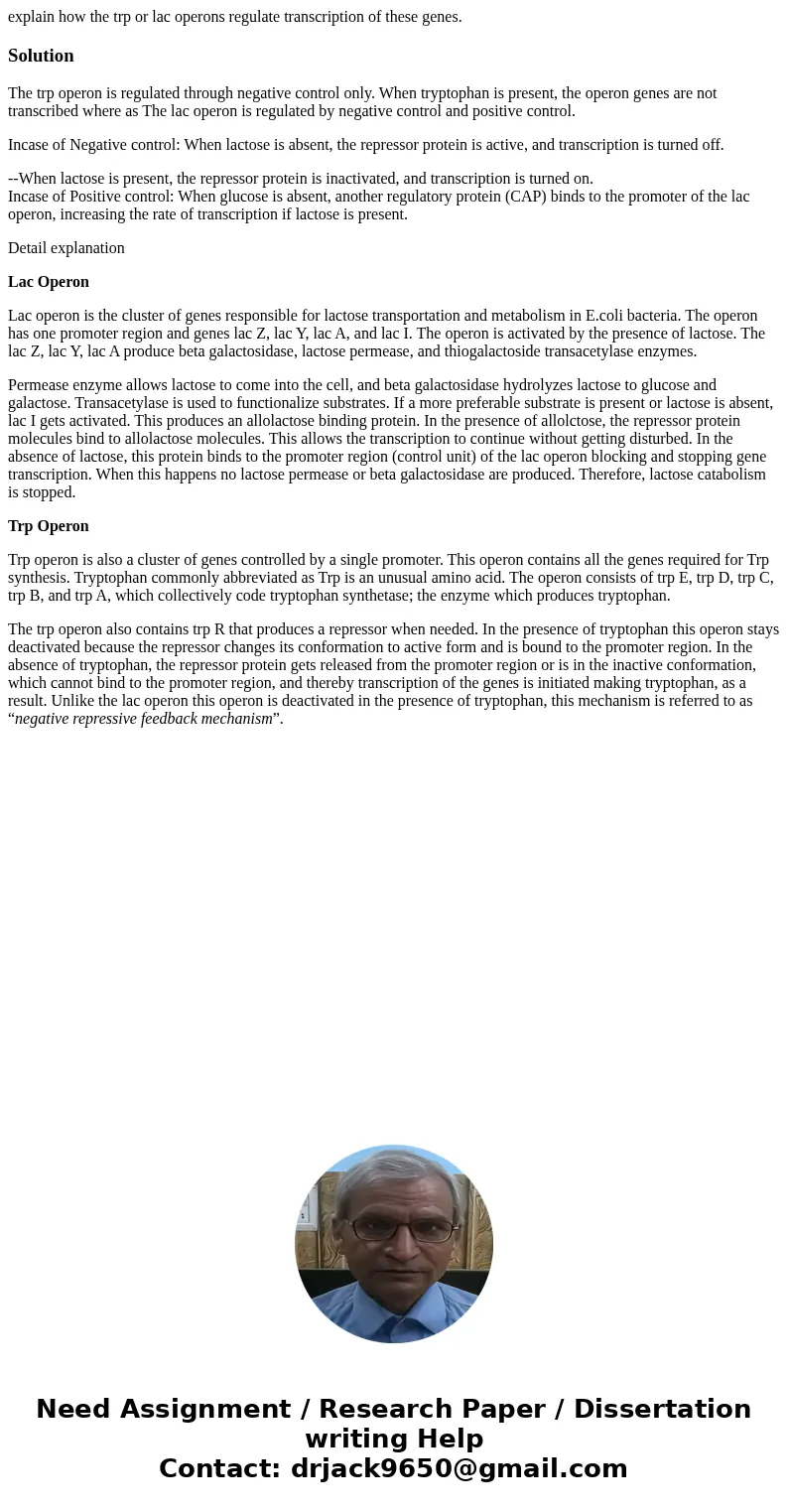explain how the trp or lac operons regulate transcription of
explain how the trp or lac operons regulate transcription of these genes.
Solution
The trp operon is regulated through negative control only. When tryptophan is present, the operon genes are not transcribed where as The lac operon is regulated by negative control and positive control.
Incase of Negative control: When lactose is absent, the repressor protein is active, and transcription is turned off.
--When lactose is present, the repressor protein is inactivated, and transcription is turned on.
Incase of Positive control: When glucose is absent, another regulatory protein (CAP) binds to the promoter of the lac operon, increasing the rate of transcription if lactose is present.
Detail explanation
Lac Operon
Lac operon is the cluster of genes responsible for lactose transportation and metabolism in E.coli bacteria. The operon has one promoter region and genes lac Z, lac Y, lac A, and lac I. The operon is activated by the presence of lactose. The lac Z, lac Y, lac A produce beta galactosidase, lactose permease, and thiogalactoside transacetylase enzymes.
Permease enzyme allows lactose to come into the cell, and beta galactosidase hydrolyzes lactose to glucose and galactose. Transacetylase is used to functionalize substrates. If a more preferable substrate is present or lactose is absent, lac I gets activated. This produces an allolactose binding protein. In the presence of allolctose, the repressor protein molecules bind to allolactose molecules. This allows the transcription to continue without getting disturbed. In the absence of lactose, this protein binds to the promoter region (control unit) of the lac operon blocking and stopping gene transcription. When this happens no lactose permease or beta galactosidase are produced. Therefore, lactose catabolism is stopped.
Trp Operon
Trp operon is also a cluster of genes controlled by a single promoter. This operon contains all the genes required for Trp synthesis. Tryptophan commonly abbreviated as Trp is an unusual amino acid. The operon consists of trp E, trp D, trp C, trp B, and trp A, which collectively code tryptophan synthetase; the enzyme which produces tryptophan.
The trp operon also contains trp R that produces a repressor when needed. In the presence of tryptophan this operon stays deactivated because the repressor changes its conformation to active form and is bound to the promoter region. In the absence of tryptophan, the repressor protein gets released from the promoter region or is in the inactive conformation, which cannot bind to the promoter region, and thereby transcription of the genes is initiated making tryptophan, as a result. Unlike the lac operon this operon is deactivated in the presence of tryptophan, this mechanism is referred to as “negative repressive feedback mechanism”.

 Homework Sourse
Homework Sourse